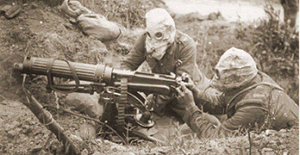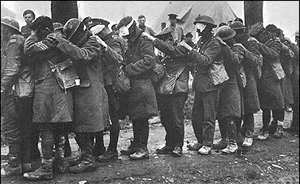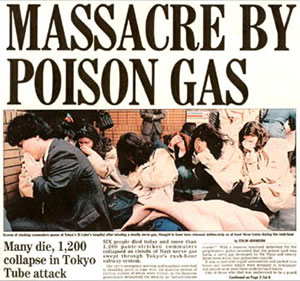Science of Conflict
Chemical warfare
Chemical warfare came into prominence during WW1 with the French use of tear gas in November 1914. In April 1915, during the battle of Ypes in Belgium, chlorine gas was released into allied trenches by the Germans. The attack was extremely effective, killing over 5,000 and injuring 10,000 allied soldiers. Since chlorine gas is heavier than air it tends to sink into trenches where it reacts with water and persists for a long period of time.


Modern day chemical warfare involves quick acting chemicals that can be absorbed through the skin. Such chemicals include sarin which was used in a terrorist attack in the Tokyo subway.
These chemicals inhibit the breakdown of the neurotransmitter acetylcholine. More will be discussed later about the action of modern day nerve agents.

Gas warfare is unpredictable and at very best strikes fear in the enemy. Gas is not used as a tactical weapon of choice and can be equally dangerous to both sides. Early uses of gas warfare proved unpredictable and subject to changing wind conditions which often proved just as hazardous to the side using the gas. Modern protective gear lessens the impact of nerve gas and only by surprise can an advantage be gained. The fact that one's own troops have to wear their protective gear makes them less able to move quickly and be as effective in battle. For these reasons gas warfare has limited uses in modern war.